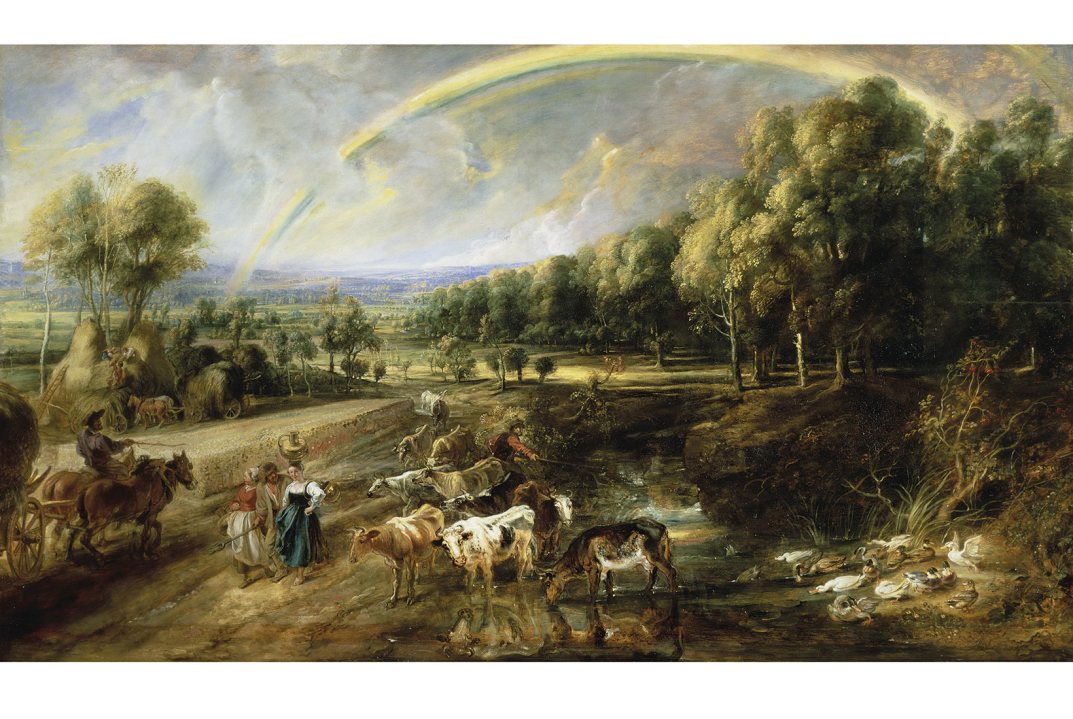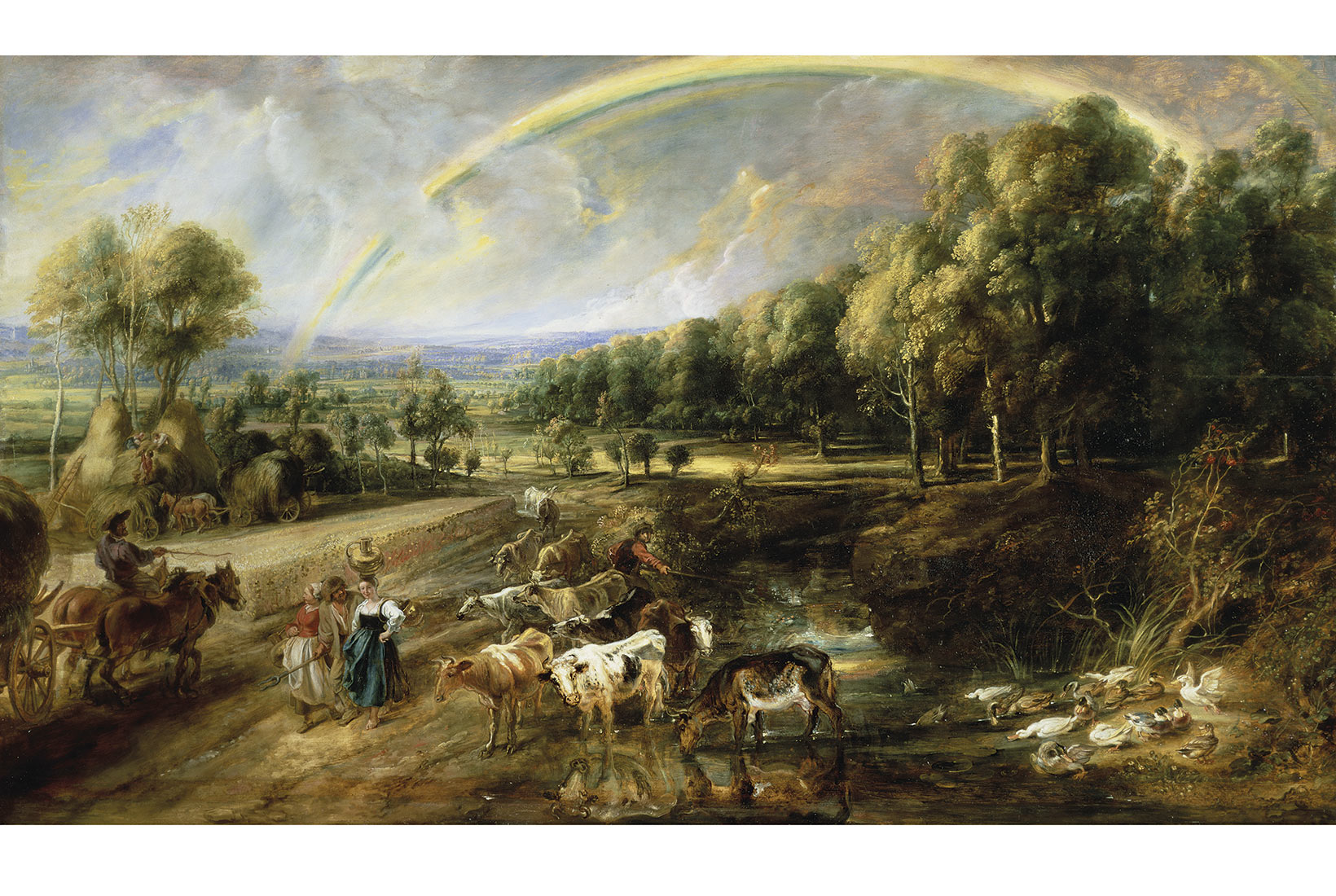Not long after the pubs, big galleries have all started to reopen, like flowers unfolding, one by one. The timing reminded me of an anecdote that Lucian Freud used to tell about a Soho painter friend he took into the National Gallery after it had shut (as some senior artists are entitled to do). They arrived after closing time in the drinking holes of Soho, and the painter friend was staggering and swaying so much that Lucian — who was not easily rattled — became alarmed that he was going to put one of his flailing arms through a Rembrandt.
I wonder how those art-lovers of yesteryear would have coped with socially distanced visits. I think they may be an improvement, at least in some respects. The one-way system by which we must now go round museums sounds like a brake on spontaneity (one of the pleasures of picture-viewing is wandering on impulse from painting to painting and room to room). On the other hand, the reduction in visitor numbers to allow social distancing strikes me as a distinct plus.
Viewing art is not a group activity, so in a gallery solitude is never a problem. But crowds definitely are. I once spent a memorable hour or two in the Gemäldegalerie Alte Meister, Kassel, a collection rich in masterpieces which that day had attracted no other customers at all. The attendants, presumably short of company, followed me around. In contrast, before the era of coronavirus seeing art in certain great museums — the Hermitage, the Louvre — was becoming impossible.
In the pre-coronavirus era it was becoming impossible to see great art in certain museums
The pressure for museums to increase attendance figures is a political one: it’s a demonstration that the public, who pay the bills, are getting their money’s worth. For each individual, however, a rush-hour crush around a famous work is a distinct disadvantage.
Now should be a perfect moment to take a long look at Van Gogh’s ‘Sunflowers’, Turner’s ‘Fighting Temeraire’ or any of the National Galley’s other greatest hits. And I strongly advise anyone who loves painting to book a ticket for Titian: Love, Desire, Death (until 17 January 2021), then spend a long time there with a few other people. The show unites a sequence of supremely great works which have never before hung together, even in Titian’s workshop.
One of the many sad consequences of Covid-19 was the abrupt disappearance or cancellation of numerous marvellous exhibitions. I am delighted that this one has been rescheduled, as has — albeit more briefly — the similarly splendid Picasso and Paper at the RA. There is less than a month to go before this closes on 2 August, so demand is likely to be intense.
Galleries seem to be emerging from lock-down earlier than other museums, perhaps because it’s easier to space people out in front of paintings than around objects. The Tates are scheduled to open their doors on 27 July. The Andy Warhol and Aubrey Beardsley exhibitions, at Tate Modern and Tate Britain respectively, have had their runs extended.
The Wallace Collection is also reopening on 15 July. In my experience, this delightful place is never packed — that’s one of its charms. Even so, this would be a good moment to spend some quality time with its fabulous Velázquez, ‘Lady with a Fan’, or the array of canvases by Watteau.
The Wallace Collection’s Titian, ‘Perseus and Andromeda’, is one of those currently at the National Gallery, but in exchange it is to be hoped the Wallace will eventually present Rubens’s ‘Rainbow Landscape’ side by side with its pendant, the National’s ‘View of Het Steen’ — together again for the first time in centuries, a rendezvous that was postponed from May.
Not all the promising shows of early spring have re-emerged in midsummer. David Hockney: Drawing from Life remains closed, as does the rest of the National Portrait Gallery, which will remain shut until 2023 while it is architecturally transformed. But the selection of new Hockney work at the Annely Juda Gallery, 23 Dering Street, will be open until the end of this month. This includes a series of portraits drawn on canvas in charcoal and coloured crayon, a combination of media that I don’t think has ever before been used in all the centuries of drawn and painted portraiture. As Hockney likes to say, there’s always another way to do it.
Its title, ‘Video Brings Its Time to You, You Bring Your Time to Paintings and Drawings’, quotes another of his axioms. You can spend as much or as little time with a handmade pictures as you wish. Most gallery-goers, apparently, spend more time reading the label than they do looking at the work itself. But outstanding art repays lengthy contemplation. Perhaps one of the unpredictable fringe benefits of the current pestilence is that — for a time at least — that may be easier to arrange.
This month sees the reopening of the National Gallery, Royal Academy, Tates Britain and Modern, Wallace Collection and Annely Juda Gallery, among others.







Comments